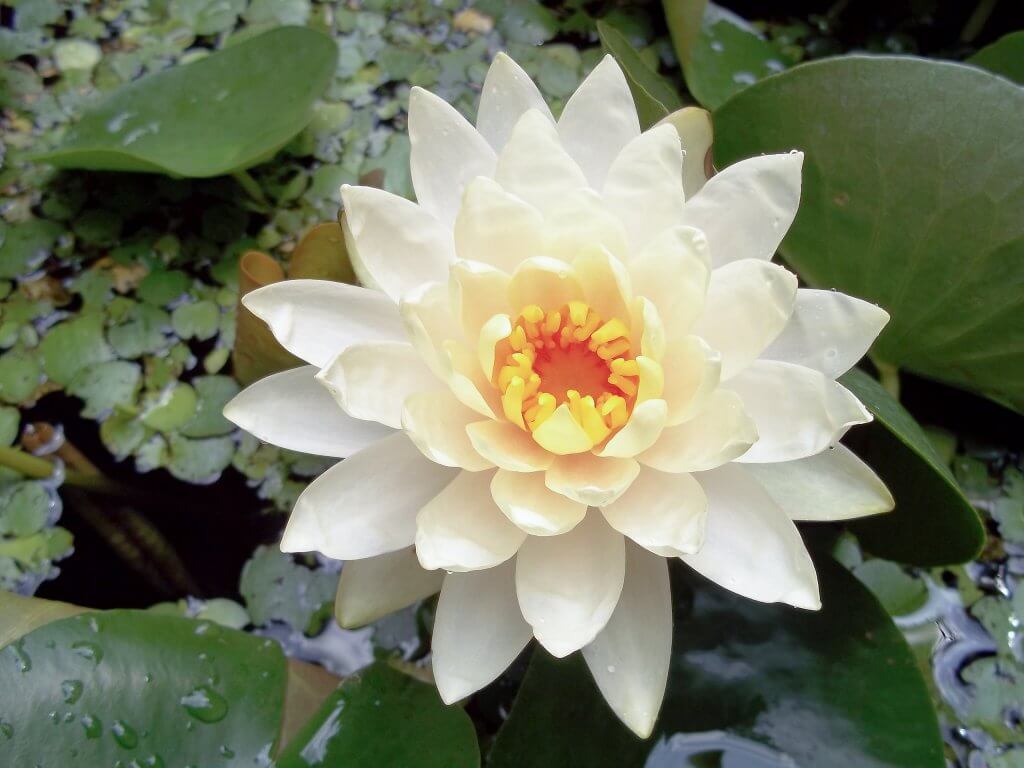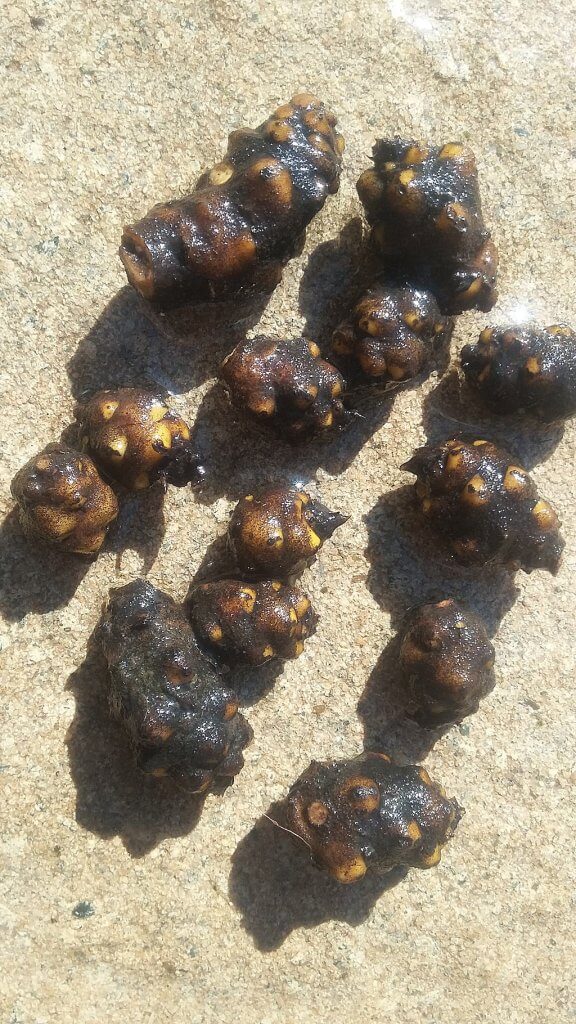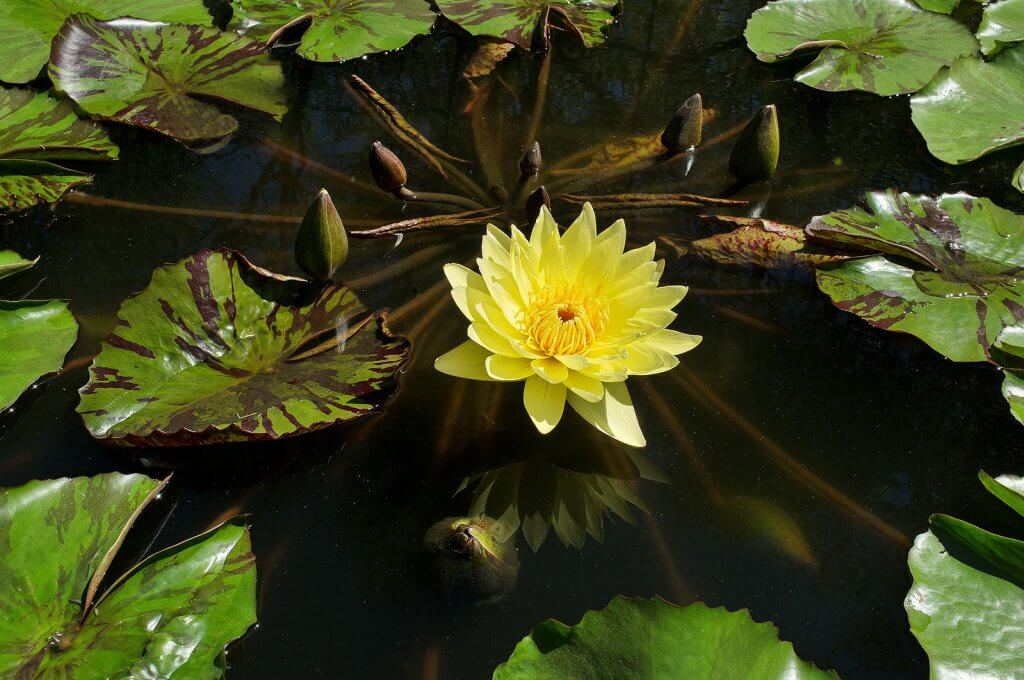Waterlily (Nymphaea spp.), a beautiful, staple feature in many garden ponds. But did you know the ornate water lily is also a wild edible of the midwest? Found throughout the world, a number of waterlily species are endemic to North America and can be found often in the wild.
You may come across a variety of species across the country. From the yellow waterlily (Nymphaea mexicana) which dominates marshes and lakes in the Southern states. To the dwarf waterlily (Nymphaea leibergii), which can be found in waterways and lakes in most Northern states. The most prolific native waterlily is the American white waterlily (Nymphaea odorata), also known by a number of quaint names such as sweet-scented waterlily and fragrant waterlily. You’ll find it across the northeastern and midwestern states, growing in marshes, slow moving water and lakes.

Water lilies are aquatic plants, at home in waterways or very moist and marshy soil. Their roots and rhizomes anchor the plant in the muddy bottom, whilst stems branch upwards, reaching lengths of up to 3m. At the surface the bold flowers and broad, waxy leaves emerge and float with their water repellent coating. Typically the leaves range between 5-12 inches, and will have the recognisable ‘V’ shaped notch where the petiole attaches.
The petals are much larger than those found on the yellow-pond lily (Nuphar spp.). Ranging in shades of white, blue, pinks, yellows and everything in between. It is no wonder why water lilies are such a popular choice for aquatic gardens. After flowering, soft, green fruits begin to form, packed full of small oval seeds.
Edible parts and other uses
Young leaves and flower buds can be plucked from the waters surface and used as a leafy green or vegetable in a variety of dishes. It is best to boil them first, then season and add into your favorite dishes, from a stir fry, warm salad, soup or omelette.
The seeds are also edible, and are not too dissimilar from those of the yellow pond-lily. Season and fry them with a little oil and you can create a flavorful and wholesome snack. They have a good amount of protein, making them a valuable and easy to access nutrient source as a wild survival food.

A small, carbohydrate dense, and tasty tuber can also be cut from the roots of the American white waterlily. They are not as large or considerable as the tubers from American lotus (Nelumbo lutea), but it still has a tasty flavoring. It can be cooked and prepared just like a potato, seasoned well and added into almost any savoury dish.
Throughout history, waterlilies have captured the heart and minds of many cultures. Symbolism, religions, herbal remedies, perfumes have been based on the radial beauty of the waterlily. Histories have also emerged of Native Americans using the stems and roots of water lilies to treat respiratory illnesses and mouth sores.
Cautions
Not all water lily tubers are palatable, there are subtle variations between species that can make certain parts bitter. Although not toxic, make sure to correctly identify American white waterlily before harvesting the tubers.
Foraging
Make sure to harvest in wild areas, such as lakes and slow moving rivers and streams, or even your own back yard. Pollution could contaminate plants in urban areas, and as an ornate plant, it could be there for display purposes.
You can cut the young leaves and flower buds from the plants in spring and early summer. And you can collect the fruits and seeds in late summer and early fall. Tubers tend to have a better flavoring before the plant flowers, so you’ll need to get your waders on in spring or summer to harvest some of these.

Did you know…
Waterlilies held great significance in the lives of ancient Egyptians. They can often be seen featured in art and carvings. The blue Egyptian lotus (Nymphaea caerulea) and white Egyptian lotus (Nymphaea lotus) in particular symbolised to them the presence and power of the sun. As it opened and closed with the rising and setting of the sun.
Conclusion
Decorative and a beauty to behold, water lilies hold an impressive history and nutrients to match. On a future amble along a lakeside, see if you can harvest a small bag full of the fruits and seeds to fry and pop at home. Or if the weather is fine, wade into a lake to cool off and collect some of the tubers too.
—————Written by Hannah Sweet
Hannah is a freelance writer and graphic designer from the UK. With a penchant for travelling, photography and all things botanical, she enjoys writing about a wealth of topics and issues, from conservation and slow living, to design and travel. Learn more about her writing and design services at www.sweetmeanders.co
Many of our readers find that subscribing to Eat The Planet is the best way to make sure they don't miss any of our valuable information about wild edibles.
See our privacy policy for more information about ads on this site







2 Responses
I have always wondered if Lilly pad leaves were editable!
I want to know more about natures edible foods, so let me know more!